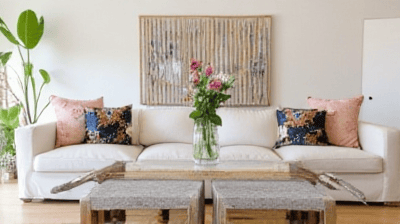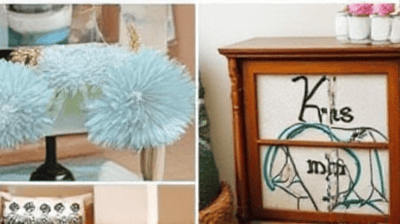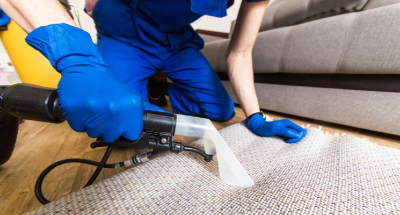In today's world, where sustainability is increasingly important, upcycling furniture has become a popular trend among homeowners and DIY enthusiasts. Not only does upcycling allow you to breathe new life into old or discarded pieces, but it also provides an opportunity for creativity and self-expression. Transforming tired furniture into unique, stylish decor items can be both satisfying and budget-friendly.

Understanding Upcycling
What is Upcycling?
Upcycling refers to the process of transforming old, unwanted, or broken items into new products that are of higher quality or value. Unlike traditional recycling, which often breaks down materials to create something entirely new, upcycling focuses on enhancing or repurposing existing items. This not only minimizes waste but also encourages creativity and resourcefulness.
Benefits of Upcycling Furniture
- Cost-Effective: Upcycling is often much cheaper than buying new furniture. You can find affordable or even free items from thrift stores, garage sales, or online marketplaces.
- Customization: Upcycling allows you to customize furniture to fit your unique style and design preferences. You can choose colors, patterns, and finishes that match your decor.
- Sustainability: By upcycling, you are reducing waste and contributing to environmental sustainability. It is a great way to recycle existing materials instead of purchasing new ones.
- Personal Touch: Upcycled furniture often carries a story or history, adding character and personality to your home.
- Skill Development: Engaging in upcycling projects can enhance your DIY skills and boost your confidence in home improvement.
Choosing the Right Furniture for Upcycling
When it comes to upcycling furniture, not all pieces are created equal. Here are some tips to help you select the right items for your next project:
1. Evaluate Condition
Look for furniture that is structurally sound but may need cosmetic improvements. Check for any damage such as wobbly legs, loose joints, or surface scratches that can be repaired easily. Avoid items that are too damaged or beyond repair.
2. Consider Material
Certain materials lend themselves better to upcycling than others. Wooden furniture is often the easiest to work with, but metal, plastic, and upholstered items can also be upgraded with the right approach.
3. Think About Functionality
Consider how you want to use the furniture after upcycling. A side table might become a trendy nightstand, or a bookshelf could be transformed into a stunning display case.
4. Evaluate Size and Space
Make sure the piece will fit well in your desired location and serve its intended purpose. Measure the area where you plan to place the upcycled furniture to ensure it fits seamlessly into your space.
5. Look for Inspiration
Browse online platforms like Pinterest, Instagram, or home decor blogs for inspiration. Seeing what others have created can spark ideas and help you visualize what you can do with your chosen piece.
Upcycling Furniture Projects
Now that we have discussed what upcycling is and how to choose the right furniture, let us dive into some specific upcycling projects you can tackle at home. Each project will include necessary materials, step-by-step instructions, and tips for a successful outcome.
Project 1: Painting an Old Dresser
Materials Needed
- A wooden dresser
- Sandpaper (medium and fine grit)
- Primer (optional for dark colors)
- Paint (chalk paint or acrylic)
- Paintbrushes and rollers
- Clear sealant (optional for protection)
Instructions
- Preparation: Start by moving the dresser outdoors or to a well-ventilated area. Empty all drawers and remove any hardware like knobs or pulls.
- Clean and Sand: Clean the surface of the dresser to remove dust and dirt. Use medium-grit sandpaper to rough up the surface, which helps the paint adhere better. Follow with fine-grit sandpaper for a smooth finish.
- Prime (Optional): If you are painting over a dark color or a glossy finish, apply a coat of primer and allow it to dry completely.
- Paint: Use a paintbrush or roller to apply the first coat of paint evenly. Allow it to dry completely before applying a second coat. For best results, use chalk paint, known for its matte finish and easy application.
- Seal (Optional): Once the final coat of paint is dry, apply a clear sealant for added protection against scratches and stains.
- Reattach Hardware: After the dresser is fully dry, reattach the knobs or pulls. Consider replacing old hardware with new, stylish options for an updated look.
Project 2: Transforming a Wooden Pallet into a Coffee Table
Materials Needed
- Wooden pallets (1-2 depending on size)
- Sandpaper
- Wood stain or paint
- Saw (if you need to cut pallets to size)
- Casters (optional for mobility)
- Wood glue or nails
- Clear sealant
Instructions
- Select and Prepare Pallets: Choose pallets that are in good condition with no broken slats. Remove any nails and sand the surface to eliminate splinters.
- Assemble Pallets: If needed, cut the pallets to your desired coffee table size. Stack them on top of each other and secure them using wood glue or nails.
- Customize Finish: Stain or paint the pallets to match your home decor. If you use stain, allow it to soak in and dry completely before applying a sealant.
- Add Casters (Optional): For mobility, attach casters to the bottom of the table. This allows you to easily move the coffee table as needed.
- Seal the Surface: Once everything is dry, apply a clear sealant to protect the finish from daily wear and tear.

Project 3: Reupholstering an Old Chair
Materials Needed
- An old chair (preferably with a removable seat)
- Upholstery fabric
- Staple gun and staples
- Screwdriver
- Scissors
- Foam padding (optional for added comfort)
Instructions
- Disassemble the Chair: Use a screwdriver to remove the seat from the chair frame. If necessary, take pictures of the original upholstery to follow as a guide for reassembly.
- Remove Old Fabric: Carefully take off the old upholstery fabric and any padding. Dispose of it properly.
- Cut New Fabric: Measure and cut new upholstery fabric, leaving a few extra inches around the edges. If desired, cut new foam padding to replace the old.
- Attach New Padding and Fabric: If using foam, place it on the seat frame, followed by the new fabric. Pull the fabric tight and use a staple gun to secure it underneath the seat, starting from the center and working your way out.
- Reattach the Seat: Once the fabric is securely stapled, reattach the seat to the chair frame. Ensure everything is properly aligned and tightened.
Project 4: Turning an Old Door into a Unique Desk
Materials Needed
- An old door
- Table legs (can be purchased or repurposed from old furniture)
- Sandpaper
- Wood stain or paint
- Screws and a screwdriver
- Clear sealant
Instructions
- Choose the Door: Find a sturdy old door that suits your style. Remove any hardware and clean the surface thoroughly.
- Sand the Door: Sand the door to prepare it for painting or staining. Remove any old paint or finish for a smooth surface.
- Finish the Door: Stain the door for a rustic look or paint it for a modern touch. Allow it to dry completely.
- Attach Legs: Securely attach the table legs to each corner of the door using screws and a screwdriver. If you are using repurposed legs, ensure they are sturdy enough to support the weight of the door.
- Seal the Surface: Finally, apply a clear sealant to protect the finish and enhance durability.
Project 5: Creating a Bookshelf from Crates
Materials Needed
- Wooden crates (can be found at craft stores or thrift shops)
- Sandpaper
- Paint or stain (optional)
- Paintbrush or roller
- Clear sealant (optional)
Instructions
- Select and Prepare Crates: Choose crates of similar size and in good condition. Remove any splinters and rough edges with sandpaper.
- Finish the Crates: If desired, paint or stain the crates to match your decor. Allow to dry completely.
- Arrange Crates: Stack or arrange the crates in a way that fits your space and style. You can create a simple tower, arrange them horizontally, or make a unique asymmetrical design.
- Secure Crates (Optional): For added stability, consider securing the crates together using screws or brackets.
- Seal the Finish (Optional): Apply a clear sealant to protect the finish, especially if the shelves will hold heavier items.
Project 6: Repurposing an Old Window into a Picture Frame
Materials Needed
- An old wooden window frame
- Sandpaper
- Paint or stain (optional)
- Clean glass (plexiglass can be used as an alternative)
- Picture hanging hardware
Instructions
- Choose the Window: Find an old window frame that is still in good shape. Clean it thoroughly to remove dirt and grime.
- Sand the Frame: Lightly sand the frame to prepare it for painting or staining. This step ensures better adhesion of the finish.
- Finish the Frame: Paint or stain the frame as desired. Dark colors can create a dramatic effect, while bright colors can add a playful touch.
- Add Pictures: If using glass, cut it to size to fit inside the frame. Afterward, insert your chosen pictures behind the glass. You can also place a backing board to hold the pictures in place.
- Hang the Frame: Install picture hanging hardware on the back of the frame for easy wall mounting.
Tips for Successful Upcycling
Plan Your Project
Before starting any upcycling project, create a clear plan outlining your vision, materials needed, and steps to follow. Planning will help you stay organized and make the process smoother.
Be Patient
Upcycling can sometimes be a meticulous process, especially when it comes to sanding, painting, or sewing. Take your time to ensure quality results, and don’t rush through the project.
Embrace Imperfections
One of the charms of upcycled furniture is its unique character. Embrace any imperfections or quirks that come with older pieces, as they can add history and authenticity to your decor.
Explore New Techniques
Don’t be afraid to experiment with different upcycling techniques and finishes. Try out various painting methods, distressing techniques, or even adding stencils or decals to personalize your creation.
Conclusion
Upcycling furniture is a wonderful way to breathe new life into old pieces while expressing your creativity and contributing to sustainability. Through this guide, you have learned about the benefits of upcycling, how to choose the right furniture, and various DIY projects you can undertake to refresh your home decor.
By engaging in these projects, you can enhance your living space with unique, personalized pieces that reflect your style. Whether you are painting an old dresser or transforming a door into a desk, the possibilities are endless. So gather your tools, unleash your creativity, and embark on an enjoyable journey of upcycling furniture for a fresh, vibrant look in your home.



